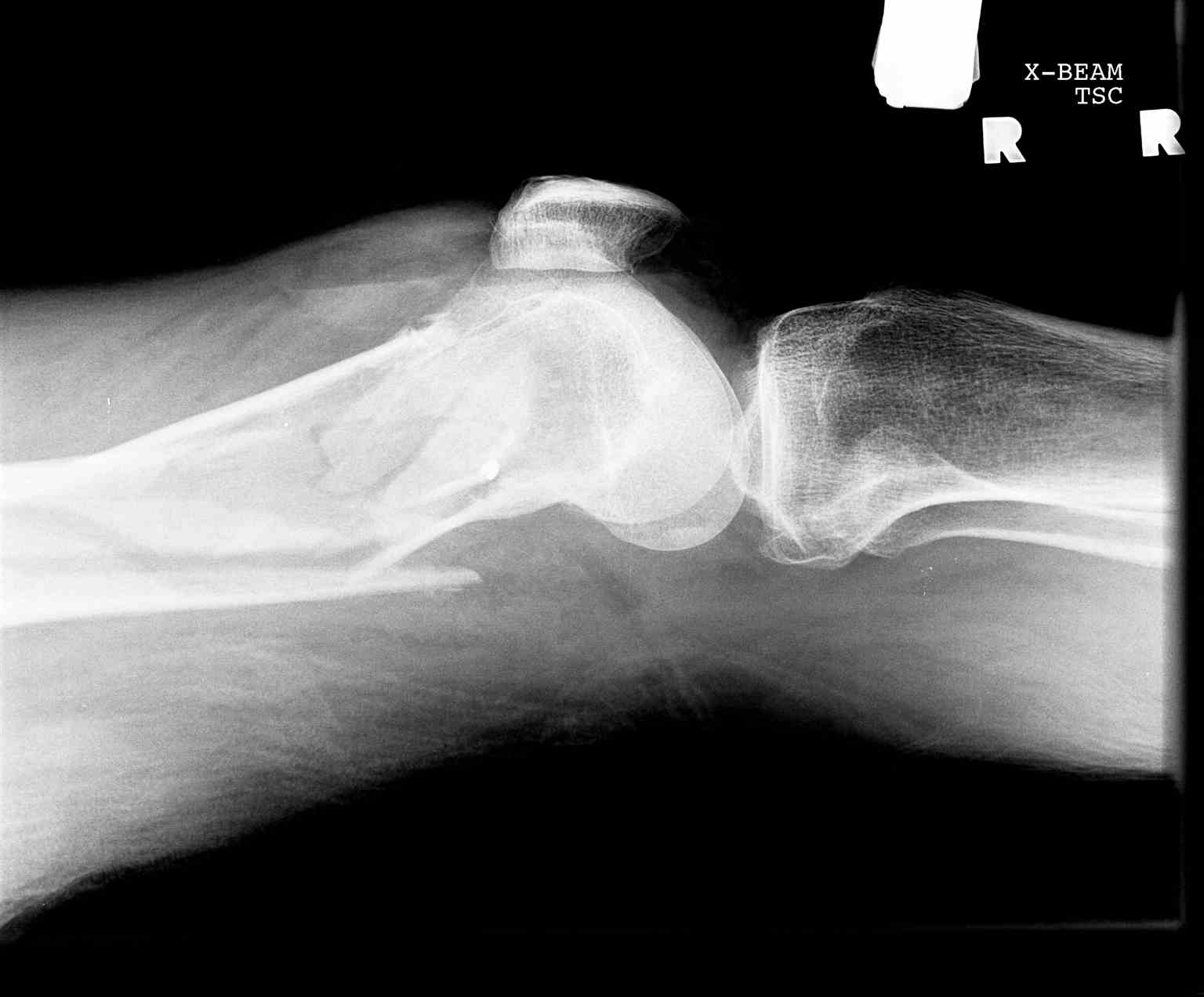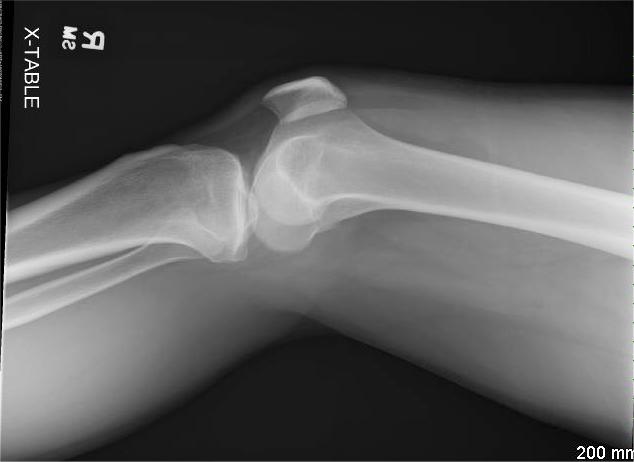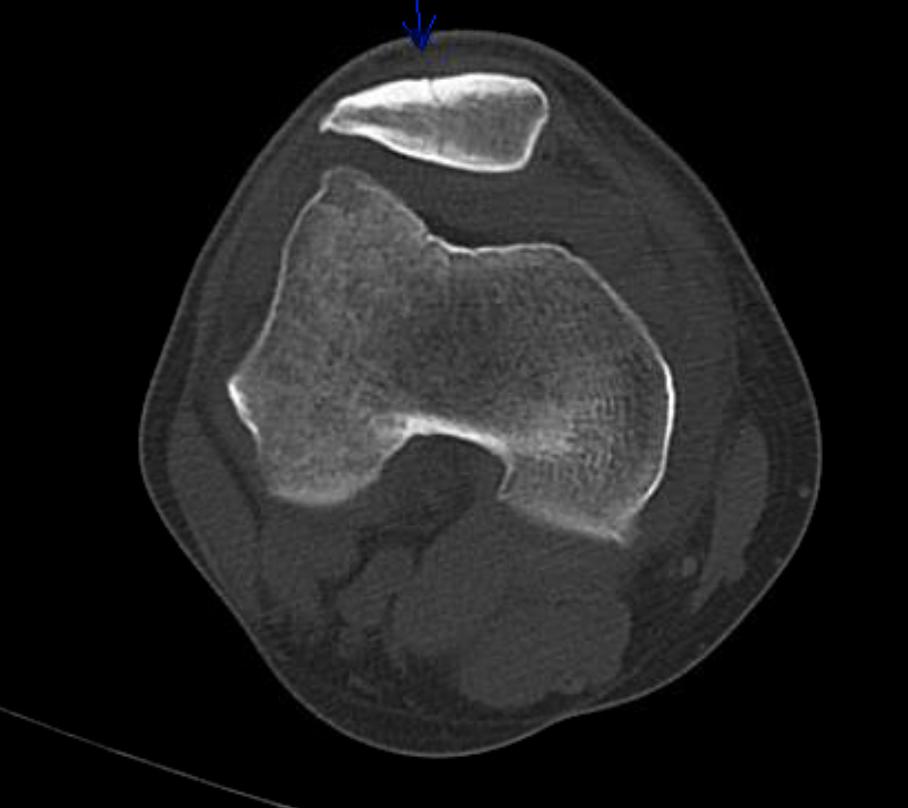[1]
Baker CL. Acute hemarthrosis of the knee. Journal of the Medical Association of Georgia. 1992 Jun:81(6):301-5
[PubMed PMID: 1607844]
[2]
Kawamura H, Ogata K, Miura H, Arizono T, Sugioka Y. Spontaneous hemarthrosis of the knee in the elderly: etiology and treatment. Arthroscopy : the journal of arthroscopic & related surgery : official publication of the Arthroscopy Association of North America and the International Arthroscopy Association. 1994 Apr:10(2):171-5
[PubMed PMID: 8003144]
[3]
Worland RL, Jessup DE. Recurrent hemarthrosis after total knee arthroplasty. The Journal of arthroplasty. 1996 Dec:11(8):977-8
[PubMed PMID: 8986579]
[4]
Manners PJ, Price P, Buurman D, Lewin B, Smith B, Cole CH. Joint Aspiration for Acute Hemarthrosis in Children Receiving Factor VIII Prophylaxis for Severe Hemophilia: 11-year Safety Data. The Journal of rheumatology. 2015 May:42(5):885-90. doi: 10.3899/jrheum.141236. Epub 2015 Mar 1
[PubMed PMID: 25729030]
[5]
Olsson O, Isacsson A, Englund M, Frobell RB. Epidemiology of intra- and peri-articular structural injuries in traumatic knee joint hemarthrosis - data from 1145 consecutive knees with subacute MRI. Osteoarthritis and cartilage. 2016 Nov:24(11):1890-1897. doi: 10.1016/j.joca.2016.06.006. Epub 2016 Jun 29
[PubMed PMID: 27374877]
[6]
Roosendaal G, Vianen ME, Marx JJ, van den Berg HM, Lafeber FP, Bijlsma JW. Blood-induced joint damage: a human in vitro study. Arthritis and rheumatism. 1999 May:42(5):1025-32
[PubMed PMID: 10323460]
[7]
Wen FQ, Jabbar AA, Chen YX, Kazarian T, Patel DA, Valentino LA. c-myc proto-oncogene expression in hemophilic synovitis: in vitro studies of the effects of iron and ceramide. Blood. 2002 Aug 1:100(3):912-6
[PubMed PMID: 12130502]
[8]
Rodriguez-Merchan EC. The destructive capabilities of the synovium in the haemophilic joint. Haemophilia : the official journal of the World Federation of Hemophilia. 1998 Jul:4(4):506-10
[PubMed PMID: 9873783]
[9]
Maffulli N,Binfield PM,King JB,Good CJ, Acute haemarthrosis of the knee in athletes. A prospective study of 106 cases. The Journal of bone and joint surgery. British volume. 1993 Nov
[PubMed PMID: 8245089]
Level 3 (low-level) evidence
[11]
Soucie JM, Cianfrini C, Janco RL, Kulkarni R, Hambleton J, Evatt B, Forsyth A, Geraghty S, Hoots K, Abshire T, Curtis R, Forsberg A, Huszti H, Wagner M, White GC 2nd. Joint range-of-motion limitations among young males with hemophilia: prevalence and risk factors. Blood. 2004 Apr 1:103(7):2467-73
[PubMed PMID: 14615381]
[12]
Aponte EM,Novik JI, Identification of lipohemarthrosis with point-of-care emergency ultrasonography: case report and brief literature review. The Journal of emergency medicine. 2013 Feb
[PubMed PMID: 22981316]
Level 3 (low-level) evidence
[14]
Ryu KN,Jaovisidha S,De Maeseneer M,Jacobson J,Sartoris DJ,Resnick D, Evolving stages of lipohemarthrosis of the knee. Sequential magnetic resonance imaging findings in cadavers with clinical correlation. Investigative radiology. 1997 Jan
[PubMed PMID: 9007642]
[15]
Lugo-Olivieri CH, Scott WW Jr, Zerhouni EA. Fluid-fluid levels in injured knees: do they always represent lipohemarthrosis? Radiology. 1996 Feb:198(2):499-502
[PubMed PMID: 8596856]
[16]
Allum R. The management of acute traumatic haemarthrosis of the knee. British journal of hospital medicine. 1997 Aug 20-Sep 2:58(4):138-41
[PubMed PMID: 9373401]
[17]
Simpson ML,Valentino LA, Management of joint bleeding in hemophilia. Expert review of hematology. 2012 Aug
[PubMed PMID: 22992238]
[18]
Kisker CT,Burke C, Double-blind studies on the use of steroids in the treatment of acute hemarthrosis in patients with hemophilia. The New England journal of medicine. 1970 Mar 19
[PubMed PMID: 4907066]
Level 1 (high-level) evidence
[19]
Gomis M, Querol F, Gallach JE, González LM, Aznar JA. Exercise and sport in the treatment of haemophilic patients: a systematic review. Haemophilia : the official journal of the World Federation of Hemophilia. 2009 Jan:15(1):43-54. doi: 10.1111/j.1365-2516.2008.01867.x. Epub 2008 Aug 21
[PubMed PMID: 18721151]
Level 1 (high-level) evidence
[20]
Iorio A, Fabbriciani G, Marcucci M, Brozzetti M, Filipponi P. Bone mineral density in haemophilia patients. A meta-analysis. Thrombosis and haemostasis. 2010 Mar:103(3):596-603. doi: 10.1160/TH09-09-0629. Epub 2010 Jan 13
[PubMed PMID: 20076854]
Level 1 (high-level) evidence
[21]
Blamey G, Forsyth A, Zourikian N, Short L, Jankovic N, De Kleijn P, Flannery T. Comprehensive elements of a physiotherapy exercise programme in haemophilia--a global perspective. Haemophilia : the official journal of the World Federation of Hemophilia. 2010 Jul:16 Suppl 5():136-45. doi: 10.1111/j.1365-2516.2010.02312.x. Epub
[PubMed PMID: 20590873]
Level 3 (low-level) evidence
[22]
van Velzen AS, Eckhardt CL, Streefkerk N, Peters M, Hart DP, Hamulyak K, Klamroth R, Meijer K, Nijziel M, Schinco P, Yee TT, van der Bom JG, Fijnvandraat K, INSIGHT study group. The incidence and treatment of bleeding episodes in non-severe haemophilia A patients with inhibitors. Thrombosis and haemostasis. 2016 Mar:115(3):543-50. doi: 10.1160/TH15-03-0212. Epub 2015 Nov 19
[PubMed PMID: 26582077]
[23]
Rodriguez-Merchan EC, Peripheral nerve injuries in haemophilia. Blood transfusion = Trasfusione del sangue. 2014 Jan
[PubMed PMID: 23245720]
[24]
Ingram GI, Mathews JA, Bennett AE. Controlled trial of joint aspiration in acute haemophilic haemarthrosis. Annals of the rheumatic diseases. 1972 Sep:31(5):423
[PubMed PMID: 5071639]
[25]
Bernal-Lagunas R, Aguilera-Soriano JL, Berges-Garcia A, Luna-Pizarro D, Perez-Hernandez E. Haemophilic arthropathy: the usefulness of intra-articular oxytetracycline (synoviorthesis) in the treatment of chronic synovitis in children. Haemophilia : the official journal of the World Federation of Hemophilia. 2011 Mar:17(2):296-9. doi: 10.1111/j.1365-2516.2010.02402.x. Epub 2010 Nov 11
[PubMed PMID: 21070486]
[26]
Thomas S, Gabriel MB, Assi PE, Barboza M, Perri ML, Land MG, Da Costa ES, Brazilian Hemophilia Centers. Radioactive synovectomy with Yttrium⁹⁰ citrate in haemophilic synovitis: Brazilian experience. Haemophilia : the official journal of the World Federation of Hemophilia. 2011 Jan:17(1):e211-6. doi: 10.1111/j.1365-2516.2010.02379.x. Epub 2010 Aug 22
[PubMed PMID: 20731723]
[27]
van Kasteren ME, Nováková IR, Boerbooms AM, Lemmens JA. Long term follow up of radiosynovectomy with yttrium-90 silicate in haemophilic haemarthrosis. Annals of the rheumatic diseases. 1993 Jul:52(7):548-50
[PubMed PMID: 8346985]
[28]
Rattray B, Nugent DJ, Young G. Celecoxib in the treatment of haemophilic synovitis, target joints, and pain in adults and children with haemophilia. Haemophilia : the official journal of the World Federation of Hemophilia. 2006 Sep:12(5):514-7
[PubMed PMID: 16919082]
[29]
Tsoukas C, Eyster ME, Shingo S, Mukhopadhyay S, Giallella KM, Curtis SP, Reicin AS, Melian A. Evaluation of the efficacy and safety of etoricoxib in the treatment of hemophilic arthropathy. Blood. 2006 Mar 1:107(5):1785-90
[PubMed PMID: 16291600]
[30]
Schild FJ, Mauser-Bunschoten EP, Verbout AJ, Van Rinsum AC, Roosendaal G. Total knee arthroplasty in hemophilic arthropathy: efficiency of clotting factor usage in multijoint procedures. Journal of thrombosis and haemostasis : JTH. 2009 Oct:7(10):1741-3. doi: 10.1111/j.1538-7836.2009.03569.x. Epub 2009 Aug 11
[PubMed PMID: 19682237]
[31]
Stoffman J, Andersson NG, Branchford B, Batt K, D'Oiron R, Escuriola Ettingshausen C, Hart DP, Jiménez Yuste V, Kavakli K, Mancuso ME, Nogami K, Ramírez C, Wu R. Common themes and challenges in hemophilia care: a multinational perspective. Hematology (Amsterdam, Netherlands). 2019 Dec:24(1):39-48. doi: 10.1080/10245332.2018.1505225. Epub 2018 Aug 3
[PubMed PMID: 30073913]
Level 3 (low-level) evidence



